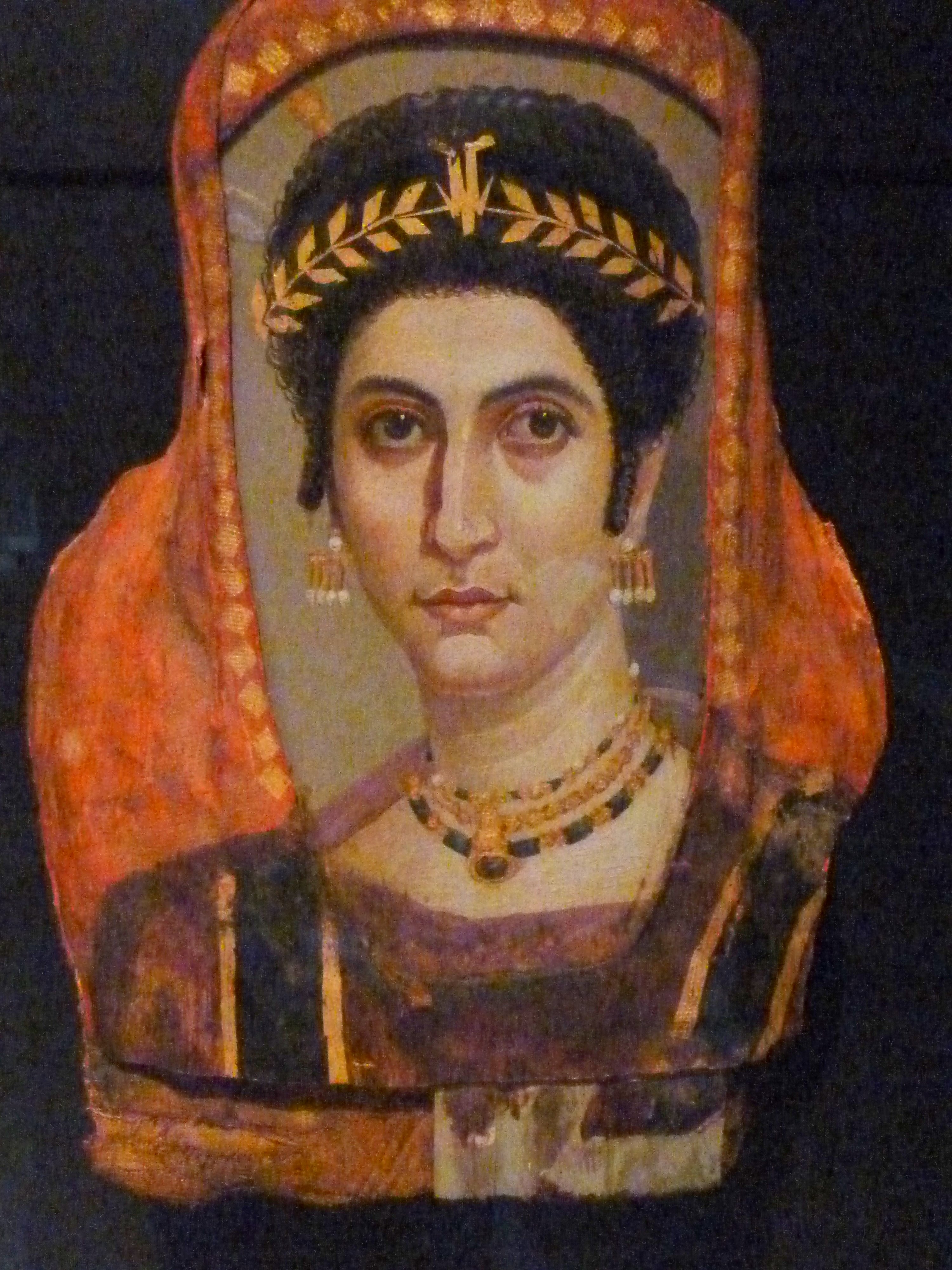

Carpenters could cut thin planks, which might be steam-bent to a slight curve so that the painted portrait could be placed snugly over the face of the mummy. So why was lime wood so popular for mummy portraits? It is a quality wood, excellent for carving. Photograph of a Tilia lime tree in the Royal Botanic Gardens at Kew. Why? Lime trees are not native to Egypt, and lime tree wood was not imported into Egypt for use before the fashion for mummy portraits. The section has been stained in the laboratory to show up the cellular details.

Image of a transverse thin section of lime reference specimen wood seen in transmitted light in the optical microscope. This has been a major breakthrough in mummy portrait research. I was surprised by the results of 180 wood identifications I have done so far on mummy portraits in Museum and gallery collections around the world – 70 percent used imported lime tree wood. I do this by examining and imaging microscopic features in wood structure (such as those shown above), using scanning electron microscopes and comparing them with reference sections of known woods (shown below) using a biological optical microscope. An important part of my job is to identify the different types of wood that people have chosen for objects, including mummy portraits. I am a wood scientist in the Department of Scientific Research at the British Museum. You can see their results on Collection online – but that would be blog in its own right! Scanning electron microscope image of a radial longitudinal section of fig wood. Some years ago British Museum colleagues carried out CT scan of certain mummies with associated mummy portraits partly to see whether the mummified body could be linked to the person in the portrait. Through scientific research, some of these questions have been answered, but as science is always developing new methods for analysis, it is intriguing to know there are more answers to find. Like my colleagues, I wanted to know how, where and why these portraits were created, and what kinds of materials were used to make them. Many of the people shown in the mummy portraits have been painted in a similar way to those seen on wall-paintings in Italy, for example in Pompeii. The women, particularly, are shown with hairstyles, clothes and jewellery reflecting Roman and Greek fashions typical of the time. Some are very realistic, others more freestyle.

Much has been written about the different styles used in these portraits. I couldn’t have planned a sweeter gallery talk introduction! Lime wood portrait of a young man with curly hair. A girl about five years old ran towards me, pointing at the portraits, excitedly calling to her mother: “mummy – look – real people”. I vividly remember one occasion at the British Museum when I was about to start a lunchtime gallery talk on mummy portraits. What’s really amazing about the mummy portraits is that they are so life-like.

Roman Period Egypt, early 2nd century AD. Mummy of a Greek youth called Artemidorus in a cartonnage body-case with a lime wood portrait panel covering his face. The mummy portrait was secured in linen wrappings or in a cartonnage (layers of linen mixed with plaster) and placed over the face of the underlying mummy. Two traditions were fused: the old and the new. It’s fascinating that, although these mummy portraits became very popular in the first to third centuries AD in Egypt, people there still mummified human bodies as they had always done, burying them in sealed tombs. These are very different from the stylised faces on decorated wooden coffins that had long been traditional in Egypt. Roman period Egypt, AD 150–170.īut what are mummy portraits and why are they important? After the Battle of Actium in 31 BC, Egypt became part of the Roman Empire and realistic paintings of people’s faces on wooden panels – ‘mummy portraits’ – became the new trend for burials. Lime wood portrait of a young man, with a gilded stucco frame. The British Museum has played an important part in the APPEAR project from the outset, with 35 partner institutions collaborating from around the world. Since then, an international collaboration was established at the Getty Museum in Los Angeles, Ancient Panel Painting Examination, Analysis and Research (APPEAR), to expand our understanding of mummy portrait technology and materials. This marked the start of my scientific research into these iconic objects. In the 1990s the British Museum hosted an extraordinary exhibition, titled Ancient faces: mummy portraits from Roman Egypt.


 0 kommentar(er)
0 kommentar(er)
